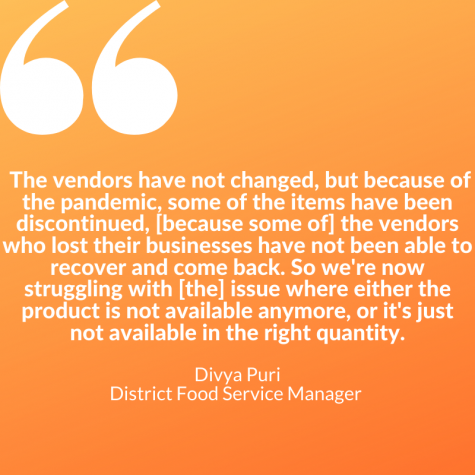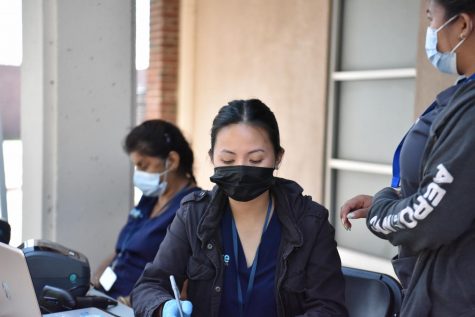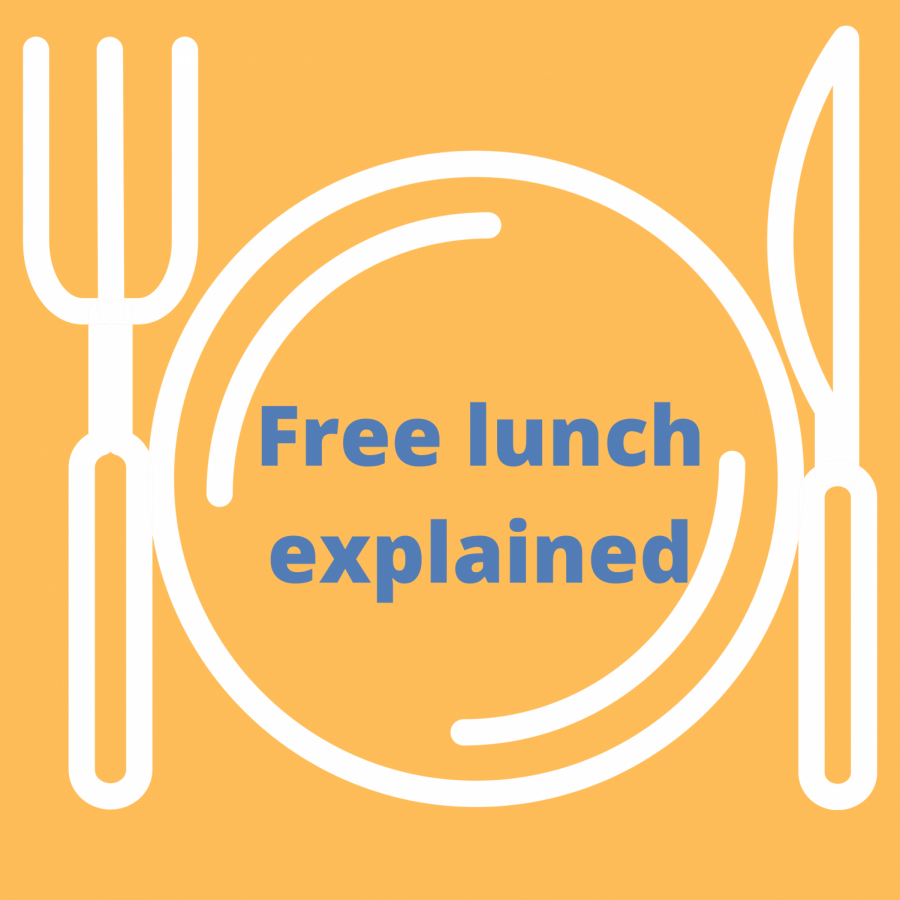Free lunch explained
Exploring the effects of free lunch at FUHSD this school year
Exploring the effects of free lunch at FUHSD this school year
After a budget surplus, California has implemented a statewide free lunch program that guarantees lunch to more than six million students at public schools. The universal program means that 100% of FUHSD students are eligible for free school lunch, more than eight times the number of students on free or reduced lunch programs before the pandemic.
To accommodate free lunches at the five FUHSD schools, District Food Service Manager Divya Puri and FUHSD Food Services hired extra cashiers and replaced keypads with digital ID scanners to accommodate the large increase in students.
“We used to only serve about 20% of our student population before,” Puri said. “We’re almost serving 68% now. [For] example, Cupertino High School made about 930 or 940 lunches [on September 1], and that school used to serve 300 meals during lunch. Our participation has not stopped. Since the first day, [the number of students who take lunch] seems to be climbing up every week.”
Junior Gene Zhou has had lunch in different ways each year he has been at MVHS: paid lunch his freshman year, weekly meals during his remote sophomore year, and now, free lunch on campus. Zhou feels that this year, the “food is worse than the normal paid lunch” his freshman year.
Sophomore Arya Senthilkumar Palanivel believes that the lunch provided is high quality, although he doubts that all the food is organic. According to Puri, the food suppliers and meal regulations have not changed but explains that the pandemic brought forth certain differences in the food supplied between this year and previous years.

“The vendors have not changed, but because of the pandemic, some of the items have been discontinued, [because some of] the vendors who lost their businesses have not been able to recover and come back,” Puri said. “So we’re now struggling with [the] issue where either the product is not available anymore, or it’s just not available in the right quantity.”
Despite the cessation of certain vendors, FUHSD has added new items to the selection. According to Puri, she and the rest of FUHSD food services have worked hard on creating a “creative, non-institutional, eye-appealing, diverse [and] Californian” menu that fits the district’s population.
“We’ve had yogurt parfaits for breakfast — that has been a big hit,” Puri said. “We bake our own muffins from muffin batter that we purchased, so when you walk into the cafeteria, it smells like a bakery. We have a Caprese sandwich on the menu that speaks volumes of how far vegetarian food choices have come in the cafeteria.”
With COVID-19 at FUHSD sites, (28 confirmed cases as of Sept. 20), both Zhou and Palanivel said they do not believe FUHSD has enough precautions in place during brunch and lunch to protect students from the virus.
“During lunch, [students] don’t exercise that precaution [of staying three feet apart],” Zhou said. “So I think we should put that into practice.”
Palanivel agrees with Zhou and further emphasizes concerns that the lunch line and cafeteria could be a place where COVID-19 might spread.
“We do use masks, [but] there’s a lot of contact with strangers that you don’t know at school,” Palanivel said. “I like that when you touch a certain food, you have to take it. [But] because there are so many people together, and they’re all going in the same spot without even distancing, it might be easier for COVID to spread.”
In response to COVID-19 concerns, Puri explains that FUHSD Food Services is doing its best to follow county regulations. Yet, she also believes that certain precautions are mutually exclusive with the ability of schools to give all students food.

“I don’t know if we can really manage [the lines],” Puri said. “We do have some line control in place, and because of COVID, we have barriers and scanners. But we have 2,000 kids on [each] campus, and we get 15 minutes to serve brunch and about 30 to 40 minutes to serve lunch, so there’s no way for us to slow down that line. Otherwise, we’re not going to be able to feed our students.”
With more students taking lunch, the lines have increased. Zhou, says he is able to get his lunch within three to five minutes because he has a free period before lunch.
“Because I have a free third [period], I usually go 10 minutes early,” Zhou said. “Then I have to wait for 10 minutes. On the days that third [period] is not before lunch, I usually go when the lunch line is short, which takes around three to five minutes.”
Zhou does not believe much can be done to increase the speed of the lunch lines, especially because of the pandemic. On the other hand, Palanivel has two suggestions.
“One, extending the time for lunch because people who can’t get the food have to continue to stay in line, which hinders their time to eat the food,” Palanivel said. “And the second thing, I think that they can split the meals outside and the inside so they can make two different locations. So there are two different lines, and … there doesn’t have to be that much crowding of spaces for it to be there.”
In order to combat the challenges Food Services has experienced, Puri suggests students join the cafeteria team.
“We need more student workers,” Puri said. “So if you’re interested, come join our team, we need more people to work for us in the cafeterias. We have some postings posted, so if people are interested, they should join our team, they’ll get paid, and they’ll be able to help feed students.”







